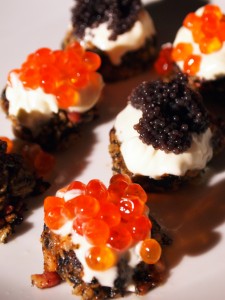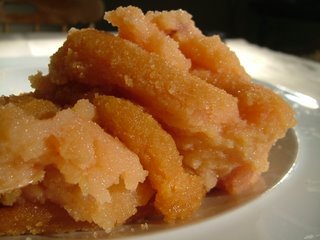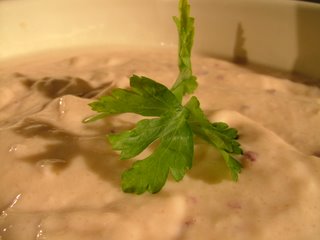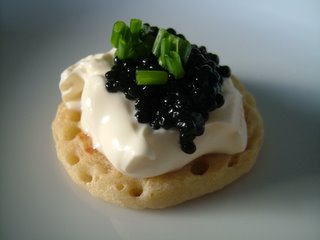 The fine folks at Kinvara smoked salmon sent me a big goodie bag full of their organic Irish salmon last week. I get through quite a lot of smoked salmon at home (damn the expense, it’s full of brain-feeding, joint-lubricating goodness), and I was enormously and very pleasantly surprised at just how good the Kinvara fish was. The smoke is a gentle one, letting the flavour of the salmon itself sing, and the firm slices of fish have a robust and delicate flavour all at once. I don’t mention all the foods I get sent to try on this blog, but this one was a doozy, and I’ll be ordering more from them (smoked salmon by post – how splendid is that?) shortly.
The fine folks at Kinvara smoked salmon sent me a big goodie bag full of their organic Irish salmon last week. I get through quite a lot of smoked salmon at home (damn the expense, it’s full of brain-feeding, joint-lubricating goodness), and I was enormously and very pleasantly surprised at just how good the Kinvara fish was. The smoke is a gentle one, letting the flavour of the salmon itself sing, and the firm slices of fish have a robust and delicate flavour all at once. I don’t mention all the foods I get sent to try on this blog, but this one was a doozy, and I’ll be ordering more from them (smoked salmon by post – how splendid is that?) shortly.
Something this good deserved a special-occasion recipe, so here, just in time for the next party you host that’s posh enough for canapes, are some classy little nibbles to impress your boss with.
To make 20 canapes, you’ll need:
100g smoked salmon
50g pancetta cubes
1 x 125g tin laverbread (for more on laverbread, see this post – I am charmed by the fact that my spellchecker suggests that what I really wanted to type here was “weaverbird”)
75g medium or fine-milled oatmeal
1 large onion
1 jar salmon roe
1 jar lumpfish roe (or caviar, if you really want to push the boat out)
250g crème fraîche
Bacon fat (you really should be keeping a jar in the fridge; it’s amazing stuff for adding flavour) or olive oil to fry
Dry-fry the pancetta in a large, non-stick frying pan until golden, and remove to a mixing bowl, keeping the fat it has released in the pan. Chop the onion finely and saute it over a low to medium heat until dark gold and sweet. Dice the salmon and add it with the onion, laverbread and oats to the pancetta bowl.
Use a spoon to stir the mixture until everything is well blended. If you want to serve these canapes in the evening, you can prepare the dish up to this stage earlier in the day and refrigerate the mixture until you are ready to assemble them later on. Use your hands to make 20 little round patties from the mixture, and fry them in a couple of tablespoons of hot bacon fat or olive oil until golden, turning once (about ten minutes).
Arrange the crisp patties on a serving dish, and put a dollop of crème fraîche on top of each one. Spoon some salmon roe on half of them, and some lumpfish roe on the other half. Serve warm.






